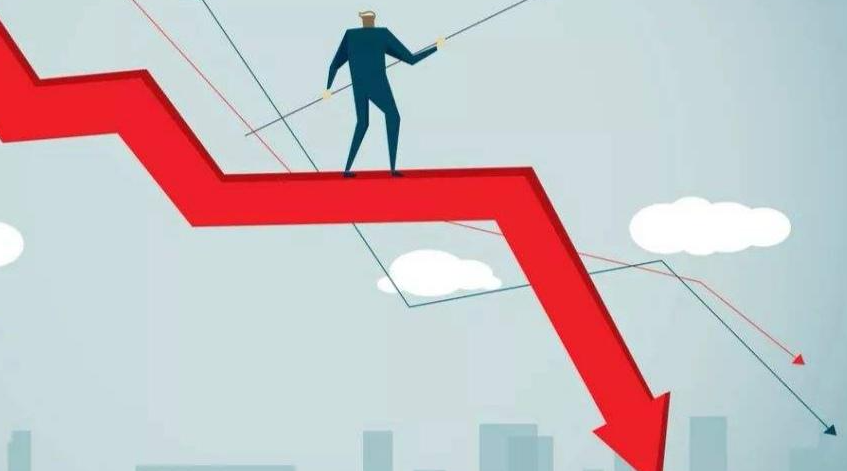In the aftermath of the “black swan” event that has rocked South Korea, the financial stability of the nation is under intense scrutiny. On December 4, the South Korean stock market opened significantly lower, prompting a special meeting of the Bank of Korea around 9 AM local time. This sudden downturn has incited not just market reactions, but also political shake-ups, as the presidential office saw the resignation of its Chief Secretary and other senior officials on the same day, amplifying concerns about the government’s handling of economic challenges.
Financial authorities, including Financial Minister Kim Byung-hwan, have pledged to employ every available measure to maintain stability within the markets. He announced that a market stabilization fund of 100 trillion won (approximately 51.5 billion RMB) would be activated if necessary. In terms of bonds, measures involving a 40 trillion won stability fund and purchases of corporate bonds and commercial papers are on the table to fortify the capital markets. This reflects the government's commitment to counteracting the volatility that is affecting both investor confidence and market dynamics.
As the events unfolded, South Korea's Composite Stock Price Index saw a fall of over 2% by the end of the day, with major players like KB Financial Group dropping nearly 4% and tech giants Samsung Electronics and SK Hynix facing declines of over 2%. The ramifications of these declines extend beyond mere numbers; they represent significant blows to the valuation and reputations of these companies, whose performance is intricately linked to the health of South Korea’s economy. For instance, Samsung Electronics and SK Hynix are pivotal in the semiconductor sector, and fluctuations in their stock prices are symptomatic of broader anxieties regarding the future trajectory of key industries.
The South Korean won also took a hit, depreciating by 0.49% against the US dollar, after having earlier experienced a drop exceeding 2%. This depreciation is directly correlated with the performance of the stock market. As stocks plummet, investor anxieties regarding won-denominated assets rise, leading to a capital outflow that places downward pressure on the currency. Such currency depreciation feeds back into the economy, impacting import costs and undermining the international competitiveness of South Korean enterprises, creating a potentially detrimental cycle.
Reports indicated that on December 3, South Korean stocks listed on American exchanges exhibited severe volatility, raising alarm about the stability of the world’s 13th-largest economy. The iShares MSCI Korea ETF, which tracks the performance of over 90 major South Korean companies, experienced a sharp drop of 7% at one point, marking a 52-week low. However, the ETF managed to close down just 1.6%, suggesting initial signs of stabilization as the “black swan” event began to show signs of easing.

Citi analysts commented that there could be hope for a quick resolution to the uncertainties surrounding the political and economic landscape of South Korea due to proactive policy responses. This suggests that while the immediate impacts might be significant, they could ultimately prove to be short-lived as the government takes corrective actions to stabilize the market.
In an ongoing effort to address these economic challenges, the Bank of Korea has engaged in consecutive rate cuts. During their November policy meeting, they lowered the benchmark interest rate by 25 basis points to 3% while adjusting the economic growth outlook for the country down from 2.4% to 2.2% for the current year, and from 2.1% to 1.9% for 2025. The decision to lower interest rates amidst soaring inflation and high household debt levels reflects a delicate balancing act, as policy makers aim to encourage borrowing and spending against a backdrop of slowing growth.
This marks the first cut since October when the Bank had lowered rates to 3.25%—a move not seen since the pandemic's peak in May 2020. The economists within the Bank articulated that, given South Korea's trade-dependent economy, factors such as global economic trends and future US policies create a high degree of uncertainty. While the reduced borrowing costs may stimulate domestic consumption, the likelihood of reversing the downward trend in exports, largely driven by long-standing competitiveness issues in key sectors, remains low. Addressing these fundamental challenges will require significant policy or structural reforms.
With an eye on household debt levels and real estate prices, three out of six members within the Bank have suggested further rate cuts within the next quarter to support economic recovery. They anticipate a moderate rebound in domestic consumption, but they also warn that intensified competition and protective trade policies in vital industries may undermine the rebound in exports more than previously expected.
The Bank of Korea's statements capture the essence of the current crisis: a faltering economy characterized by weak domestic demand, slowing exports, and rising unemployment is losing its momentum for growth. They predict that while a mild recovery in domestic consumption is on the horizon, the recovery in exports could be weaker than earlier forecasts, signaling the need for concerted efforts to navigate these turbulent waters.